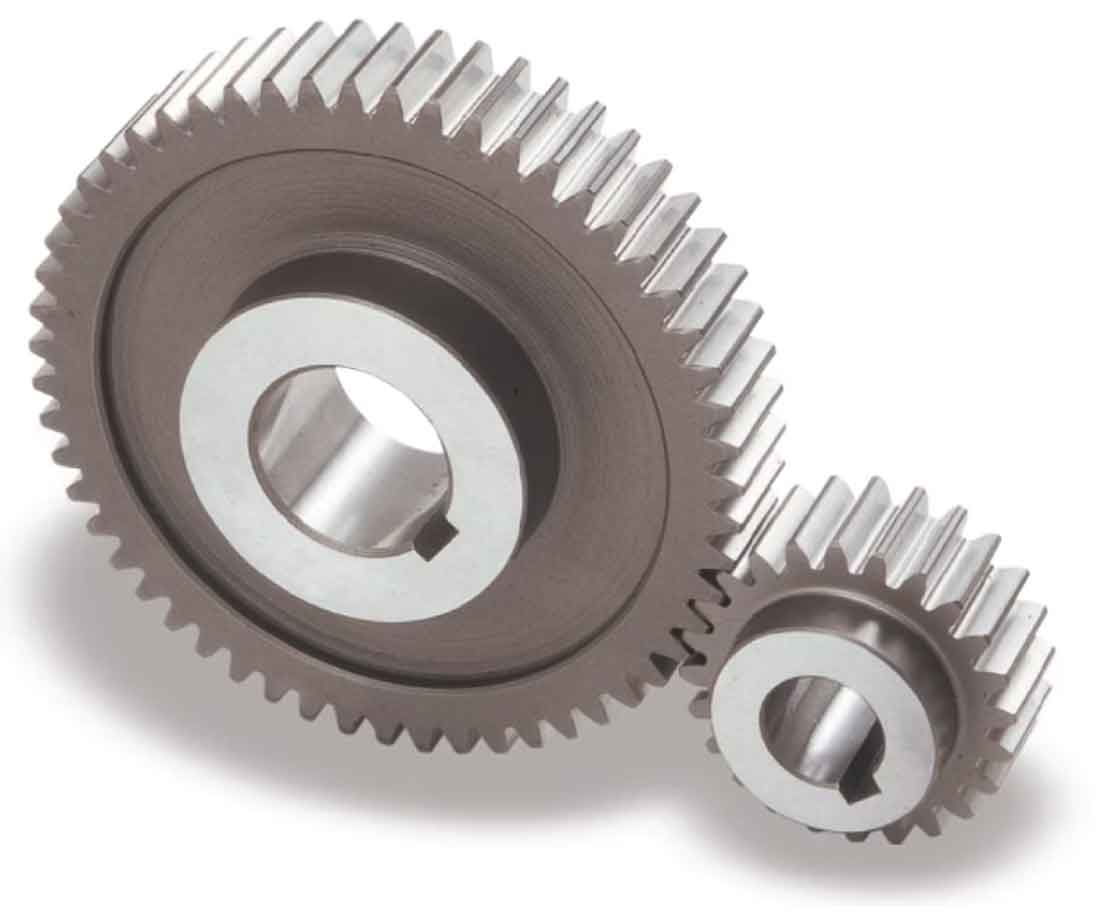
Mastering spur gear design involves considering various factors to ensure efficient power transmission. Here are key steps and considerations to optimize spur gear design for efficient power transmission:
- Determine Application Requirements: Understand the specific requirements of the gear application, such as torque, speed, load, and operating conditions. These factors will guide the gear design process.
- Select Gear Material: Choose a gear material that suits the application requirements, considering factors like strength, durability, wear resistance, and compatibility with the mating gear. Common materials for spur gears include steel, cast iron, bronze, and plastic polymers.
- Calculate Gear Parameters: Calculate the essential gear parameters based on the application requirements. These include the number of teeth, pitch circle diameter (PCD), module or diametral pitch (DP), pressure angle, and face width. There are standard formulas and design guidelines available to assist in these calculations.
- Check Gear Tooth Strength: Ensure that the gear teeth are strong enough to withstand the applied loads without failure. Tooth strength calculations involve assessing factors like bending stress, contact stress, and surface durability. Consider safety factors and consult relevant standards, such as AGMA (American Gear Manufacturers Association) or ISO (International Organization for Standardization) guidelines.
- Optimize Gear Tooth Profile: Choose an appropriate tooth profile, typically involute or cycloidal, and optimize the tooth shape for smooth engagement, minimal noise, and efficient power transmission. Advanced design software or gear design guides can assist in generating accurate tooth profiles.
- Consider Gear Meshing Efficiency: Efficient power transmission relies on minimizing friction and losses during gear meshing. Optimize parameters such as tooth profile accuracy, backlash control, surface finish, and lubrication to reduce friction and increase efficiency.
- Address Lubrication and Cooling: Ensure proper lubrication of the gear system to minimize friction and wear. Select the right lubricant type, viscosity, and lubrication method suitable for the operating conditions. Additionally, consider cooling mechanisms to dissipate heat generated during operation, especially in high-speed or high-load applications.
- Verify Gear Design through Analysis: Perform computer-aided analysis or simulation using gear design software to verify the performance of the gear system. This can include stress analysis, contact analysis, and efficiency calculations. Adjust the design as necessary based on the analysis results.
- Prototype and Test: Build a prototype gear system based on the finalized design and conduct testing to validate its performance. Evaluate factors like noise, vibration, efficiency, and durability. Make any necessary refinements based on the test results.
- Maintenance and Inspection: Implement a regular maintenance and inspection schedule to ensure continued efficient power transmission. Monitor factors like gear wear, lubrication condition, and tooth damage to detect and address any potential issues early on.
Remember, mastering spur gear design is a continual learning process, and experience plays a vital role. Stay updated with industry standards and advancements in gear technology to refine your designs and optimize power transmission efficiency.
